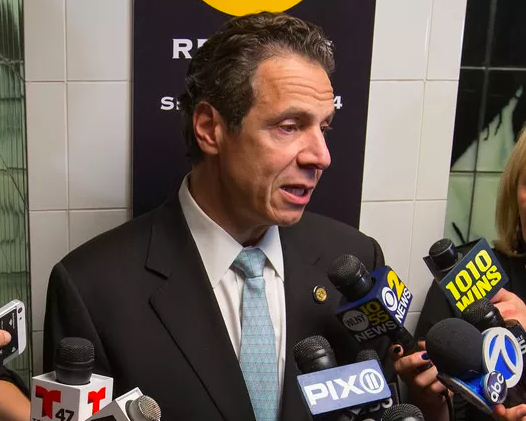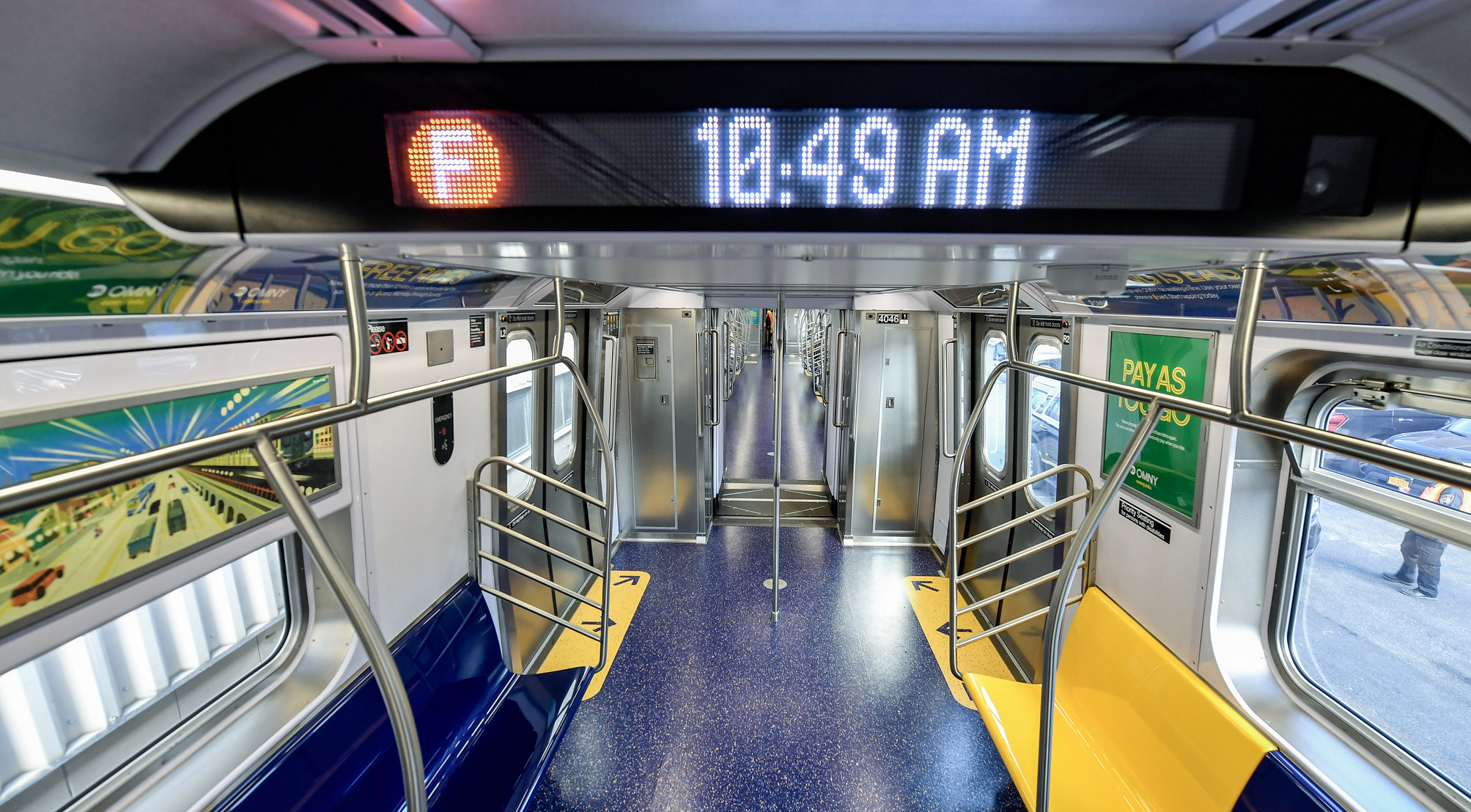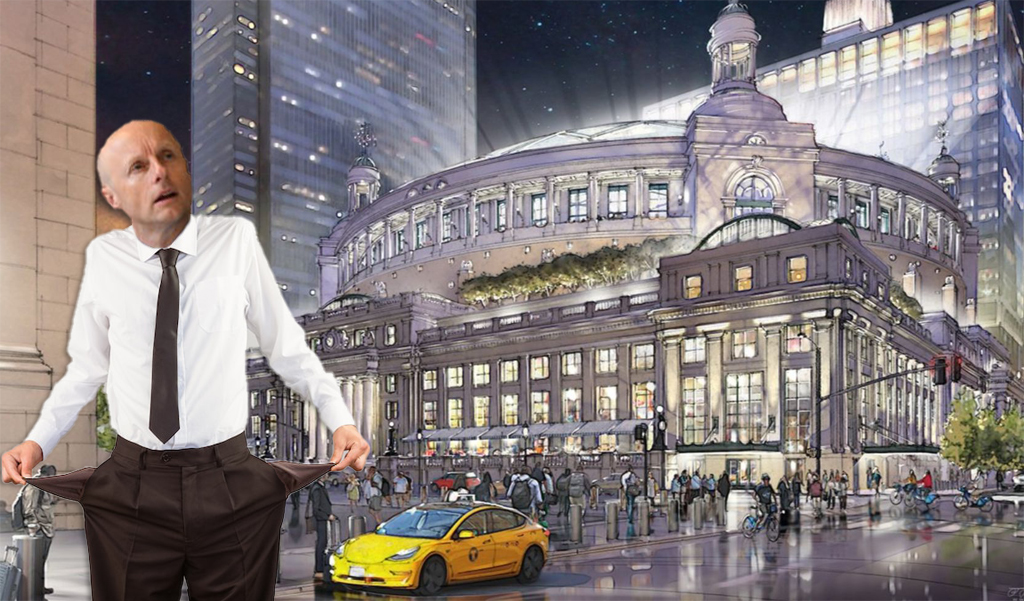The 2018 Albany budget season is in the books, and despite the assurances of Andrew Cuomo, there's still no end in sight for New York City's festering transit and traffic problems.
Cuomo began the year invoking the need to move beyond "cheap political slogans," but after watching the governor shy away from the congestion pricing recommendations of his own Fix NYC panel, that speech reads like so much cheap politics. Cuomo never went out on a limb or applied any public pressure to get congestion pricing through the state legislature.
Instead, New York wound up with a set of fees on taxi and Uber trips below 96th Street that won't do much of anything to curb traffic. The governor has said, unconvincingly, that the cordon toll will be negotiated next session, in 2019, after the November election. That would be more believable if the 2018 budget included funds to install E-ZPass gantries for those tolls. It doesn't.
As a result of Albany budget negotiations, Mayor de Blasio also agreed to send $418 million in city funds to the MTA for the "Subway Action Plan." This was always more of a political showdown than a real policy debate. Badgering the mayor for the money was a way for Cuomo to assert dominance and deflect attention from his own failures as steward of the transit system. De Blasio never managed to gain the upper hand.
If there's an optimistic read on the situation, it's this: New York's transportation system is in the depths of such an unmitigated crisis that there's no way to paper over it. The "solutions" in the budget are half-measures that won't work. And now that de Blasio has agreed to pay what Cuomo demanded, the governor has one less excuse for poor subway performance.
In short, there's no reason for the pressure on Cuomo to dissipate. Here's a brief review of where things stand and why New Yorkers need to keep demanding that the governor fix the transit system and get rid of excess traffic.
The crummy service
You can't reduce the breakdown of basic transit service to one overarching factor -- there are too many overlapping causes to count. But a shortlist for the subways would have to include: poor maintenance of core track and signal infrastructure, the excessive deployment of "grade timers" that slow train service, and an inability to effectively prevent operational snafus from spiraling into systemwide delays. For buses, we're talking about car traffic delaying service, an antiquated and excruciatingly slow fare payment system, and dispatching that fails to prevent buses from bunching.
To the extent that the "Subway Action Plan" is a real set of policy prescriptions, it addresses some of the issues with track and signal maintenance, as well as limiting the extent of delays when they occur. But there is little evidence so far that it's making an impact on subway performance.
Under Cuomo, the most convincing development that the MTA is finally ready to turn things around was the recent hiring of Andy Byford to run New York City Transit. Byford has said encouraging things about reducing the prevalence of grade timers, speeding up the timetable for resignaling the system, and releasing an action plan to improve bus service. It's still early in the Byford era -- too early to draw conclusions about his leadership.
For now, the fact remains, Cuomo has yet to prove that the funding he secures for the MTA will result in better service that improves people's daily lives and builds confidence in the agency.
The high costs
Long-term, New York needs a high-performance transit system with more capacity. Peak-hour trains should come more often, more stations should be accessible, buses should be faster and more reliable, and frequent service should extend to more of the city.
Cost-effective procurement and capital spending is essential to delivering these upgrades, but under Cuomo, there's no sign the MTA is making progress on this front. Expansion projects remain more expensive in New York than anywhere else in the world, while upgrades like installing elevators and even basic upkeep appear to cost significantly more here than in peer cities.
If Cuomo fails to address the cost problem at the MTA, gains in revenue will be quickly swallowed up by the outrageous expense of maintaining and improving the system. More than three months after Times reporter Brian Rosenthal's bombshell investigation focused public attention on high MTA capital costs, the governor still hasn't personally acknowledged the need to reduce them.
The neverending traffic jam
New York's insane traffic mess is both a contributor to crappy bus service and a reflection of how many people are abandoning unreliable transit in general. Independently of the transit system, it's also a huge, stress-inducing drag on neighborhoods, an impediment to safer streets, and a massive waste of time and resources for everyone caught up in the slog.
This was the one problem Cuomo could have addressed head-on by enacting congestion pricing in the budget, and he failed. Without a cordon toll in addition to the Uber and taxi fees, traffic in the Manhattan core and the neighborhoods that skirt it will remain punishingly intense.
The fare hikes
One area where the revenue from the taxi/Uber fee might help is reducing the MTA's reliance on fare-backed debt. Debt service accounts for an increasing share of the agency's operating budget, creating upward pressure on the fare and crowding out resources that should be going to run trains and buses.
It's not clear yet how the new revenue will be allocated by the MTA, but a portion of it could be used to reduce agency borrowing.
The problem is, Cuomo's other failures will limit any fare affordability effect. If Albany had enacted congestion pricing, the agency would have more flexibility to allocate revenue between core maintenance, capital upgrades, service improvements, and keeping fare hikes in check. The taxi/Uber fee only raises about a third of that amount. And if Cuomo doesn't get MTA costs under control, any progress on debt reduction will get knocked back by rising expenses all too soon.






